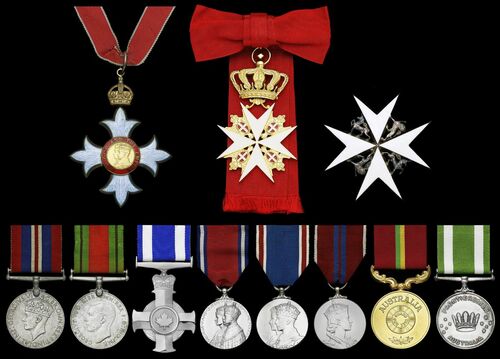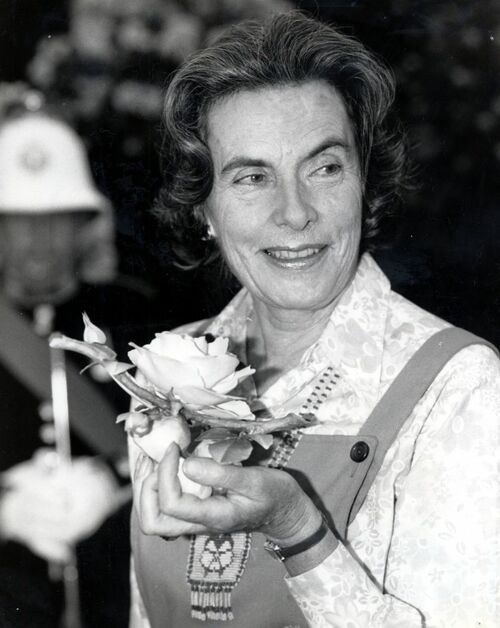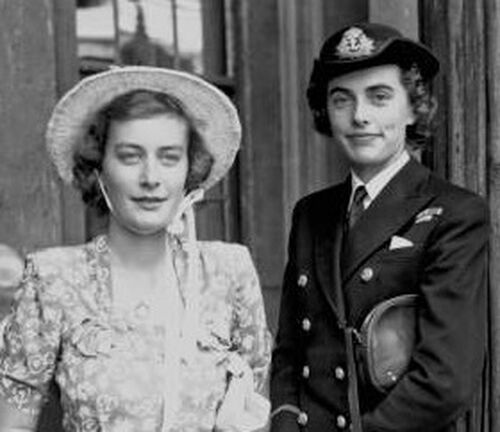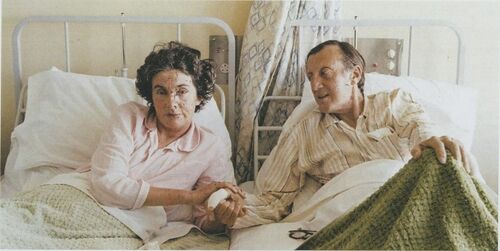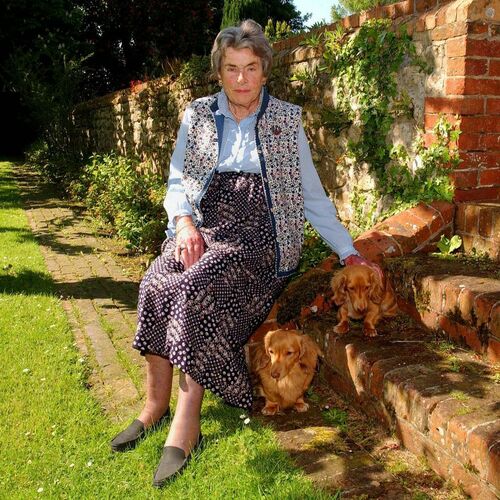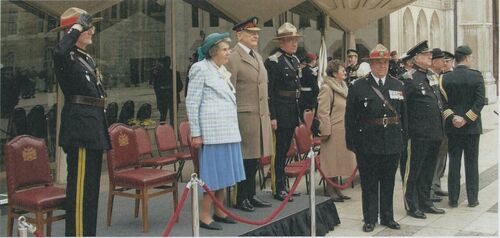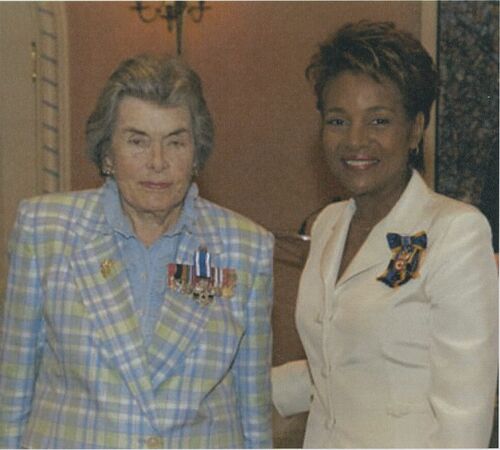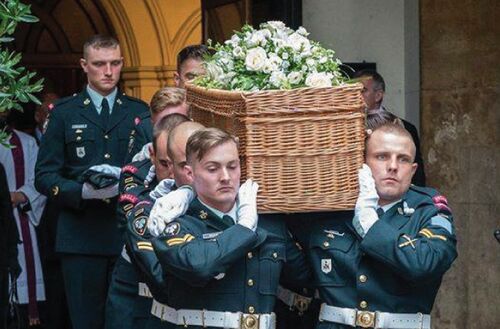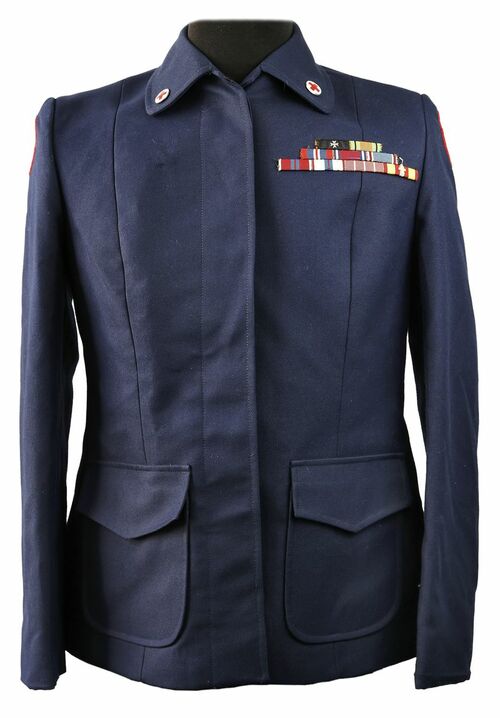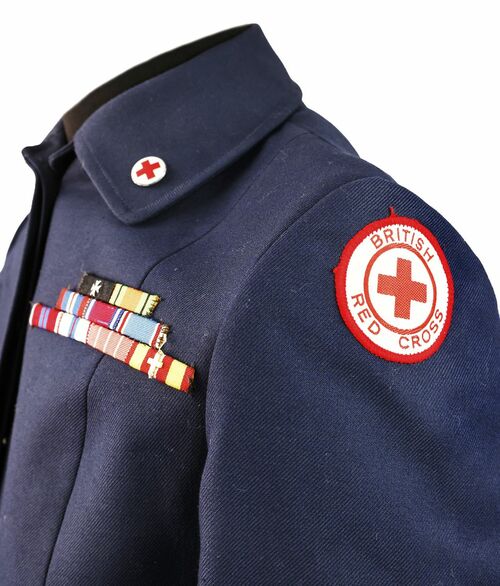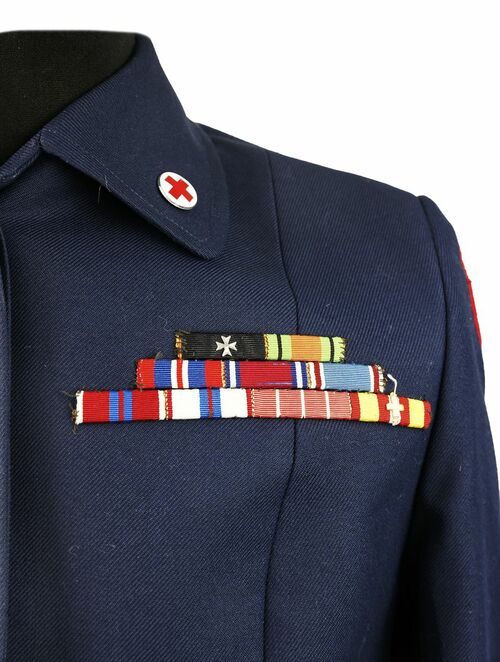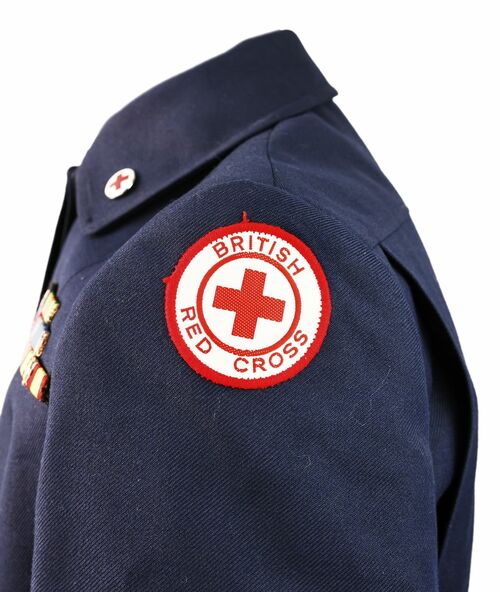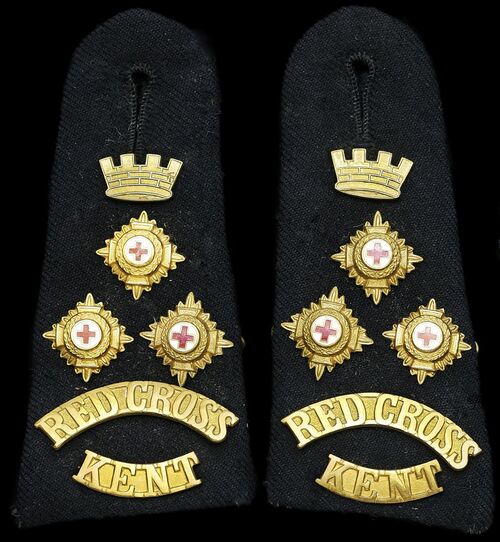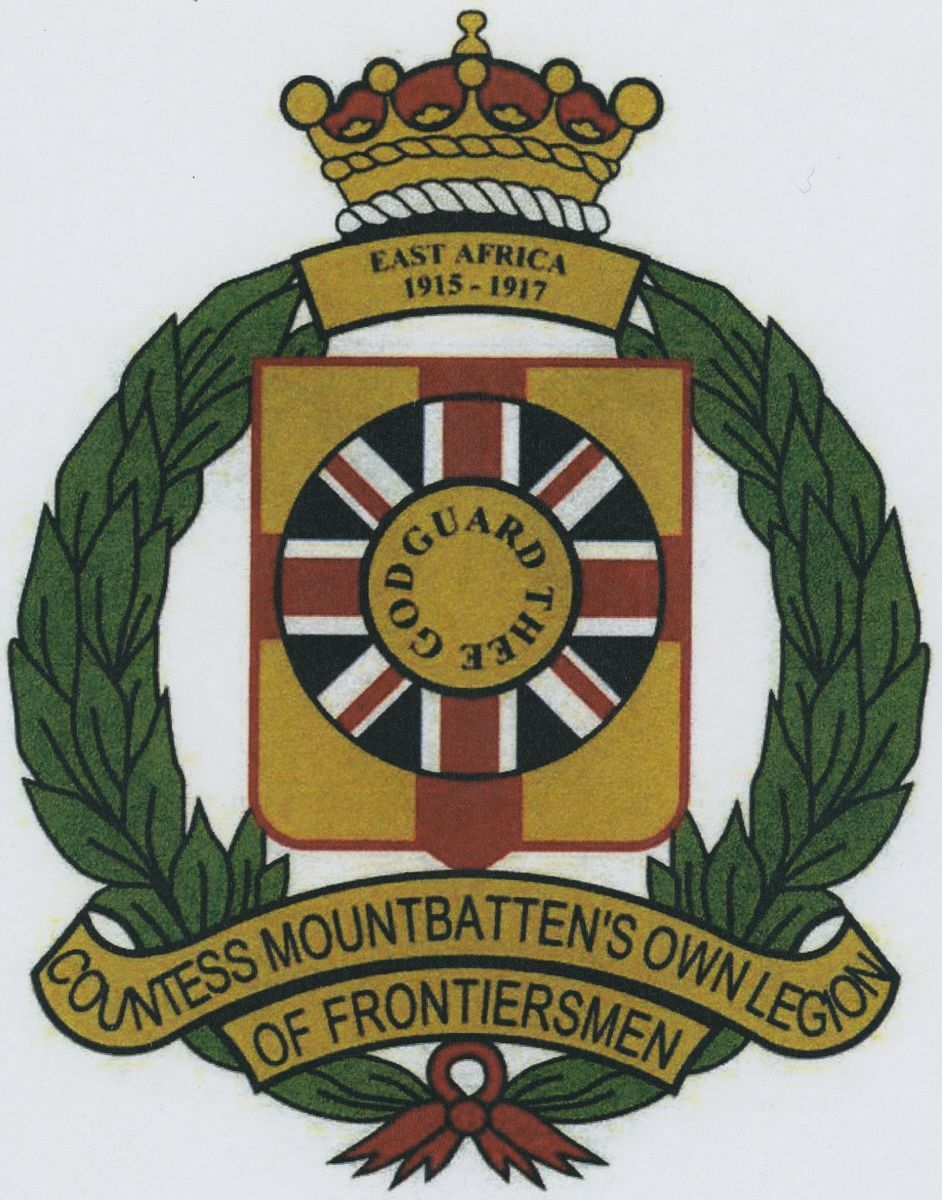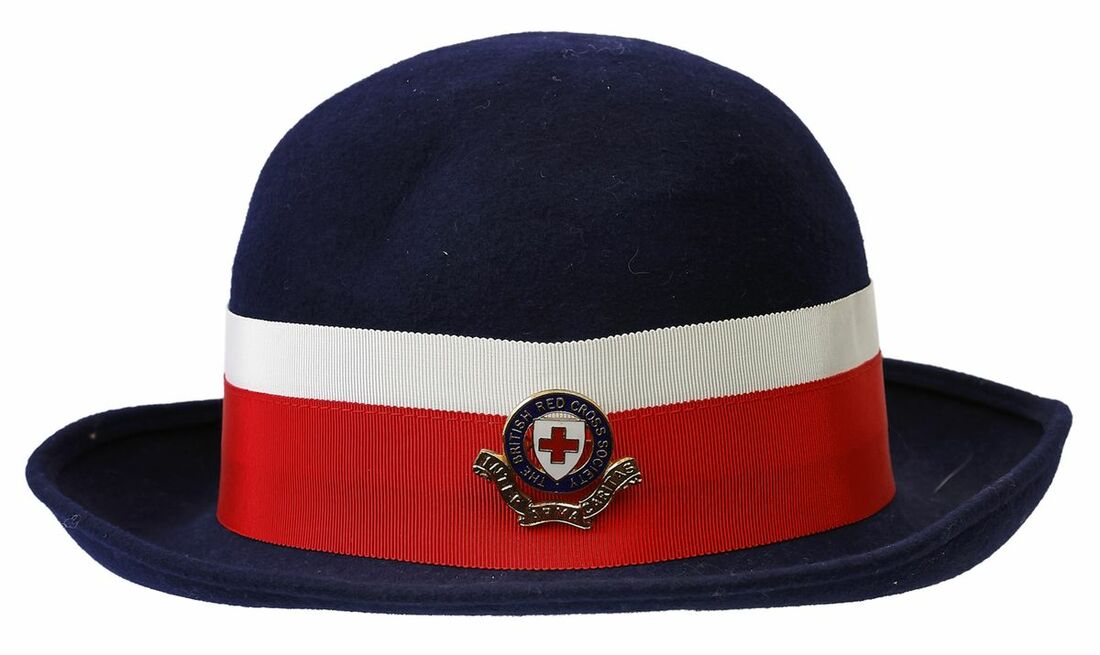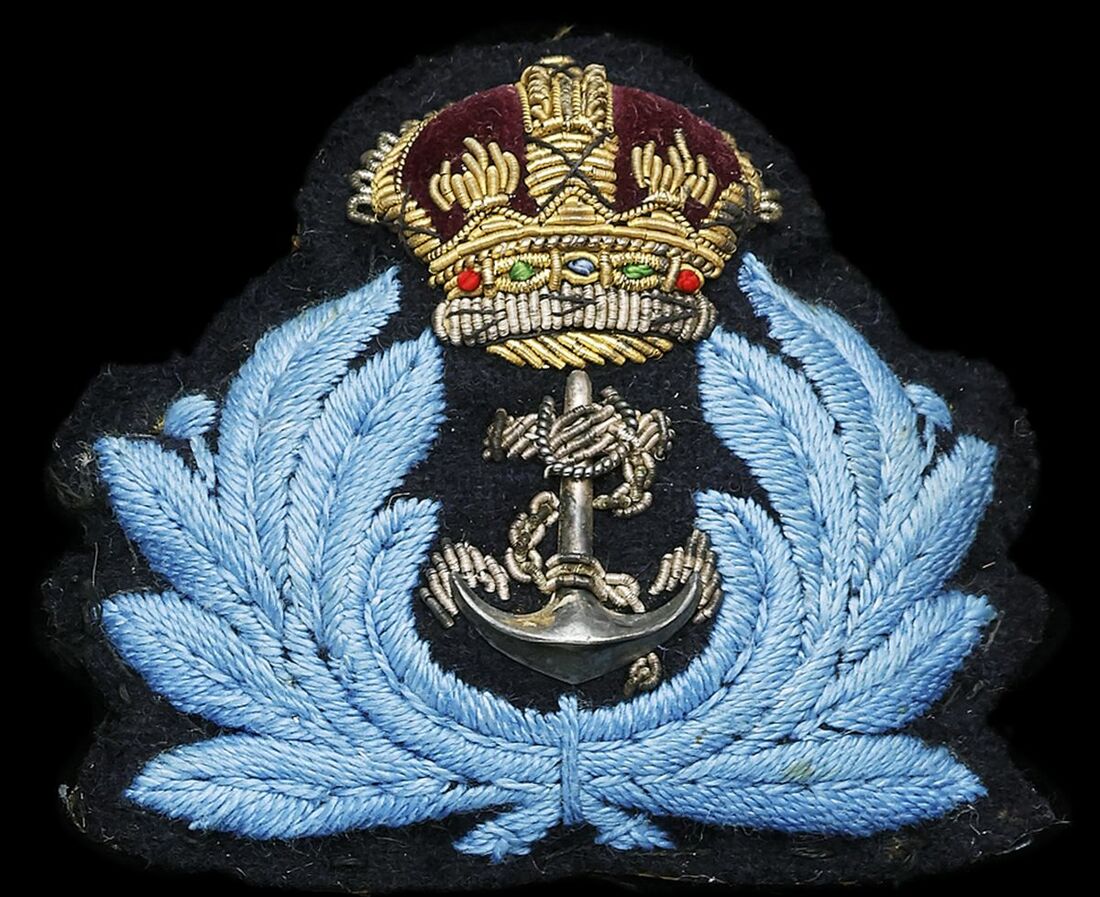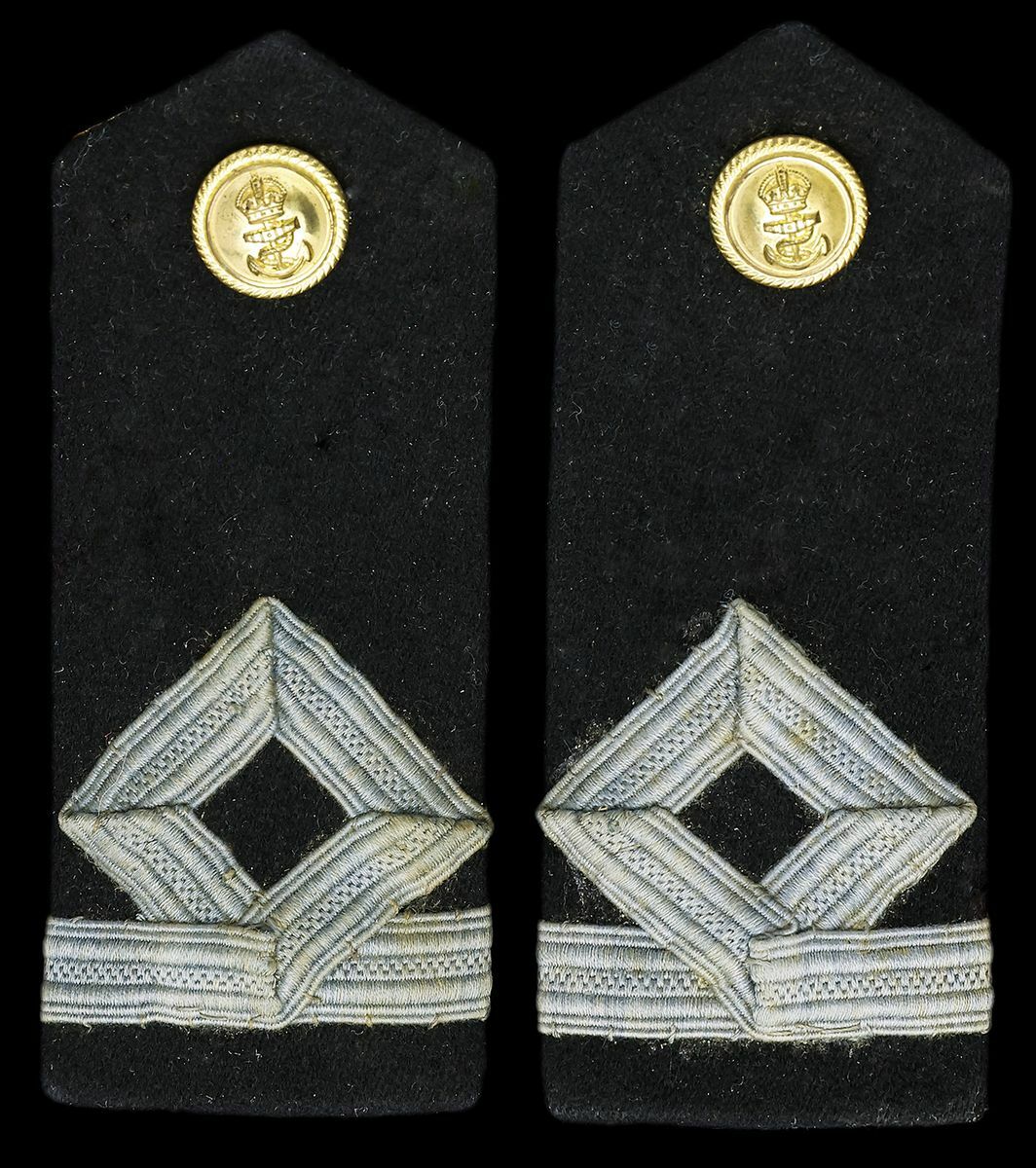Auction: 23002 - Orders, Decorations and Medals
Lot: 88
The impressive and well-documented C.B.E., Canadian M.S.C., D.St.J. group of eleven awarded to Third Officer P. E. V. Knatchbull, Women's Royal Naval Service, 2nd Countess Mountbatten of Burma, Lady Brabourne, Patron of the Countess Mountbatten's Own Legion of Frontiersmen of the Commonwealth and Colonel-in-Chief of the Princess Patricia's Canadian Light Infantry (1974-2007), for which she earned the unique Honorary Appointment to the Canadian Meritorious Service Cross and the only award to a woman
The Most Excellent Order of the British Empire, C.B.E. (Civil) Commander’s 2nd Type neck Badge, silver-gilt and enamel, with miniature width neck riband; The Most Venerable Order of St John of Jerusalem, Dame's breast Star, silver and enamel, in case of issue, together with an International Order of Malta breast Badge, gilt and enamel; Defence and War Medals 1939-45; Canada, Meritorious Service Cross, silver (Countess Mountbatten 2007), in its case of issue; Jubilee 1935; Coronation 1937; Coronation 1953; Legion of Frontiersmen (Australia) Medal of Merit (Countess Mountbatten of Burma); Legion of Frontiersmen (Australia) Medal 1907-83 (Countess Mountbatten of Burma), good very fine (Lot)
C.B.E. London Gazette 15 June 1991:
'Chairman, Joint Committee, Order of St John and British Red Cross Society; Vice-President, British Red Cross Society.'
Dame of the Order of St John London Gazette 21 July 1981.
Canadian M.S.C. awarded 10 July 2007, invested 28 August 2007 in a private ceremony at Rideau Hall. The following citation is extracted from The Meritorious Service Cross 1984-2014:
'The Countess Mountbatten of Burma was appointed Colonel-in-Chief of the Princess Patricia’s Canadian Light Infantry in 1974. For more than 30 years, she demonstrated an outstanding level of dedication and commitment to the Regiment and to the Canadian Forces. She made countless visits to soldiers in garrisons across the country and in the field, including visits to battalions serving on overseas operations in Germany, Cyprus, Bosnia-Herzegovina, Croatia and Kosovo.
As Colonel-in-Chief, she served as an important role model and actively promoted the Regiment. Lady Mountbatten’s continued support has been an invaluable inspiration to the soldiers and their families and has brought great credit to the Canadian Forces and to Canada.'
Governor-General Michaëlle Jean also made the following speech at the investiture:
'Canada and Great Britain share a special bond that stretches back over the centuries. We are connected by a shared language, by history, and by similar democratic institutions. And of course we are connected through our armed forces. The esteemed individual we are honouring today is the personification of that link.
For over 30 years, Lady Patricia, the Right Honourable Countess Mountbatten of Burma, served as the Colonel-in-Chief of the Princess Patricia’s Canadian Light Infantry. Through the years, she has earned the respect of all with her steadfast commitment to the soldiers of this storied regiment. Since her appointment in 1974, Lady Patricia has endeavoured to meet the Patricias in their own element, wherever that might be. Lady Patricia has visited Canadian Forces bases and detachments in every part of the country. She has gone to Gagetown, Petawawa, Winnipeg, Shilo, Edmonton, Calgary, Chilliwack, Victoria, Whitehorse, Yellowknife, and Ottawa. Lady Patricia has also participated in field-training exercises held in Wainwright, Suffield and Gagetown, and she has travelled to the high arctic to see soldiers training in Resolute Bay and Cornwallis Island.
As well as meeting members of the regiment throughout Canada, Lady Patricia has also ventured into zones of conflict to encourage soldiers serving on overseas operations, and recognize their invaluable contribution. Since 1976, she has endured long journeys and difficult conditions to meet with soldiers serving in remote and isolated areas. She has met with members of the regiment in Kosovo, Bosnia-Herzegovina and Croatia, as well as Cyprus and Germany.
It has been recognized that, as a result of these trips, Lady Patricia made a significant contribution to mission success, through her outstanding encouragement and support. I believe her success as Colonel-in-Chief is due in part to the fact that Lady Patricia is a veteran of the Second World War. After joining the Wrens—the Women’s Royal Naval Service—in 1943, she served as a Signal Rating, eventually being commissioned as Third Officer (Cipher). In that capacity, Lady Patricia worked at Combined Operations bases in the United Kingdom and in the Supreme Allied Headquarters, South East Asia. Her service in that conflict gave her an excellent understanding of life in the armed forces, and the challenges faced by soldiers. That is no doubt why Lady Patricia has been unstinting in her support of the Patricias and their families.
She has hosted them at her home and at other private functions, and has worked with groups affiliated with the regiment, like the PPCLI Association, the Loyal Edmonton Regiment, and the Canadian Army Cadet Corps associated with the PPCLI.
The Countess Mountbatten of Burma is a model we can all look up to - an example of such timeless values as duty, selflessness and honour. For more than 30 years, she performed the duties of Colonel-in-Chief with the greatest degree of commitment to the soldiers and a deep and abiding interest in their welfare, and that of their families. She has helped unite serving soldiers, veterans, cadets, their families and the general public, raising awareness of the regiment and underscoring its ongoing contribution to the well-being of Canadians.
For all these reasons, I am very pleased, as commander-in-chief of the Canadian Forces, to present the Meritorious Service Cross to Lady Patricia, the Right Honourable Countess Mountbatten of Burma. I offer the sincere thanks of the people of Canada for your many years of service.'
Penelope Meredith Mary Knatchbull was born on Valentine's Day 1924, the eldest daughter of the Earl Mountbatten of Burma. Her obituary published in The Telegraph gives further detail:
'Countess Mountbatten of Burma, who has died aged 93, inherited the earldom created for her father Earl Mountbatten of Burma after narrowly escaping death in the IRA bomb attack in which he and her son Nicholas were killed.
Although stricken with grief and badly wounded, she soldiered on and in the course of an exemplary life became involved with more than 50 charities as well as serving as a magistrate and Lord Lieutenant of Kent.
On August bank holiday 1979, a bomb was planted by the IRA in Shadow V, Lord Mountbatten’s motor-cruiser moored in Mullaghmore Harbour, near Classiebawn, Co Sligo, his Irish home. When the boat left the harbour, Lord Mountbatten was accompanied by his daughter Patricia (the future Countess) and her husband Lord Brabourne, the Brabournes’ 14-year-old twins Nicholas and Timothy, the Dowager Lady Brabourne, and a 15-year-old boy from Enniskillen, Paul Maxwell.
Patricia Mountbatten recalled that as Shadow V left the harbour, she was sitting on one side in the boat’s stern; the last thing she remembered hearing before the bomb exploded was her mother-in-law saying: “Isn’t it a beautiful day?”
The bomb was detonated by remote control and Lord Mountbatten, Nicholas Knatchbull and Paul Maxwell were killed. The Brabournes and their surviving twin son, Timothy, were all badly wounded; the Dowager Lady Brabourne died the next day.
After being pulled out of the water, the survivors were rushed to Sligo hospital where Patricia had to have more than 120 stitches in her face (including her eyeballs) and a steel plate inserted in her leg, which had been badly broken. Although still in deep shock and in intensive care, she began to realise the enormity of what had happened, though no one wanted to jeopardise her recovery by telling her the truth. They did so only after she had managed to scrawl a note which read “I think Daddy and Nicky are dead”.
She had been tremendously close to her father and, as she later explained, she had always thought that when he died it would be a terrible moment. “But I was so totally overwhelmed by the sorrow of losing Nicky that I began to feel guilty that I was not feeling enough sorrow about losing my father.”
After spending five weeks in hospital, she and her husband went home in wheelchairs and spent months on crutches. But the psychological injuries took longer to heal: “I cried every day for over six months and intermittently for the next year. I can still cry over it very easily,” she said in 1987.
Outwardly she put on a brave face, attending the wedding of her eldest son two months after the tragedy, in a wheelchair. The fact that her husband had similar injuries and had suffered a commensurate loss enabled them to give each other mutual support and by becoming involved in voluntary and charitable work, Lady Mountbatten slowly found the grief easier to bear.
She became president, deputy president and patron of a vast number of charities mainly concerned with healthcare, children and the Armed Forces. To all of these she demonstrated utter dedication and commitment, giving unstintingly of her time. In 1991 she was appointed CBE for her voluntary work with the Red Cross, of which she was vice president.
Patricia Edwina Victoria Mountbatten was born in London on February 14 1924, the eldest daughter of the then Lieutenant Lord Louis Mountbatten and his wife Edwina (née Ashley).
Patricia and her younger sister Pamela were not close to their mother. To her daughters, wrote Mountbatten’s official biographer Philip Ziegler, Edwina was “the tinkle of a charm bracelet, the whiff of scent, a quick goodnight kiss”. Uninterested in children and unable to express her emotions, she left the girls to the care of their nannies.
Their father compensated for their mother’s lack of affection. It was he who sat on their beds, chatted about the day’s events, read to them and invented games for them to play.
Lord Mountbatten advocated a morality based on common sense. When Patricia, aged 11 or 12, was caught smoking in the shrubbery, he reproached her for doing it in secret. If she had really wanted a cigarette so badly, he said, she should have asked him rather than practise a deception: “I don’t believe God will strike you dead if you lie, but people won’t rely on you and in the end you won’t be clever enough to remember what you said before and you’ll be caught out,” he told her.
Patricia was very close to her father. Dark and serious-looking, she had inherited her mother’s good looks, but not her volatile temperament. Edwina was jealous of the affection between her husband and eldest daughter; even when Patricia was grown up his meetings with her had to be contrived with discretion so that Edwina should not suspect that a relationship existed from which she was excluded.
Patricia was educated at various schools in Malta (where her father was stationed before the War), in England and in New York, where she lived with her mother and sister in the early years of the war. Returning to England, she joined the Wrens after her 18th birthday and served for a time on the signals staff in Portsmouth, where her colleagues described her as being rather shy, but natural and unaffected.
It was while she was serving as a Wren that she met her future husband, Lord Brabourne, a captain in the Coldstream Guards, then serving as ADC to Mountbatten in his role as Supreme Allied Commander South East Asia.
Brabourne asked her to marry him a dozen times and a dozen times she said no, reluctant to take the plunge. What would happen, she asked her father, if in a few years she fell in love with someone else. “I know you,” he replied, “it won’t happen. Your sense of duty won’t let it happen.”
Lord Brabourne finally got her to agree to marry him almost by accident. He had called to collect her for a visit to an aunt but she was still hurriedly packing. He came racing up the stairs saying: “Aren’t you ready yet? Come on, hurry up and will you marry me?”
Flustered, she replied: “Yes, yes, yes, all right then.” At their wedding, which took place with great pomp in October 1946, Patricia was attended by the Princesses Elizabeth, Margaret and Alexandra. “Sad without Patricia”, Mountbatten wrote in his diary the next day.
After their marriage, the Brabournes moved into a converted pair of half-timbered cottages on the Brabourne family estate at Mersham, in Kent, while the main house, Newhouse, was being occupied by a school. They eventually moved to Newhouse in 1950. After the war, Lord Brabourne pursued a successful career as a film producer and later became chairman of Thames Television.
Patricia remained close to her father and was with him in India in 1948 on the day when Mahatma Gandhi was assassinated. “My father and I had been riding together,” she recalled. “We came back at dusk to be met by a white-faced ADC with the news. My father was asked what would happen. He said it was very, very dangerous.” Mountbatten, she remembered, was “at the centre of everything, calming everyone down – ‘gripping it’, as he liked to say. But it was an electric, terrifying atmosphere.”
The Brabournes remained friends with Nehru and with his daughter Indira Gandhi. In 1983 they accepted Mrs Gandhi’s invitation to India’s Republic Day celebrations and dined with her en famille.
Edwina Mountbatten died in 1960 and after Lord Mountbatten’s assassination the earldom passed to Patricia Brabourne by a special remainder granted in 1946 by King George VI enabling the title to pass through the female line.
Lady Mountbatten and her sister Lady Pamela Hicks decided that any biographies of their parents should be candid. When intimate details of her mother’s infidelities were revealed by Janet Morgan in her book Edwina Mountbatten, A Life of Her Own, Lady Mountbatten said: “I knew in theory that her life was like that, but I hadn’t known all the details.”
Her mother, she said, had had a miserable childhood and lacked love. Of her father she said: “Of course he had his faults, but he never did a dishonest thing.”
In 1991 Lady Mountbatten and her family had to endure another tragedy when her five-year-old grand-daughter, Leonora Knatchbull, died of cancer. None the less, she continued to find reasons for happiness: “I had wonderful parents, a marvellous grandmother, a supremely happy marriage and seven super children. I now say I have six children here, and one in Heaven, where I am sure Nicky is, God bless him.”
Lady Mountbatten had been a widow since Lord Brabourne’s death in 2005. She is survived by their four sons and two daughters. The eldest son, the 8th Lord Brabourne, born in 1947, succeeds to the titles.'
The Mountbatten of Burma website gives details on the Legion of Frontiersmen:
'In 2002, Patricia agreed that the Legion of Frontiersmen of the Commonwealth (of which she was Patron) would be known as 'Countess Mountbatten's Own', which celebrates her family’s long connection with the Legion of Frontiersmen going back to her grandfather - Prince Louis of Battenberg, later 1st Marquess of Milford Haven (1854-1921), who was a founder-member of the Legion.
On the 24th April 2005, the Countess Mountbatten's Own Frontiersmen together with the Legion of Frontiersmen Volunteer Reserve celebrated one hundred years of serve to Crown and Country, with a Service of Thanksgiving at St Botolph Without Bishopsgate Church in the City of London. The Centennial Service was preceded with a Ride of the Legion's Troop of Horse saddling up in The Royal Mews, then riding out past Buckingham Palace onto the City of London, where they joined the Frontiersmen from around the world as they left the church to Troop the Colour before Patricia, who awaited them on the forecourt of The Guildhall and took the salute.'
A staunch supporter of the P.P.C.L.I. over the years, the tough decision to relinquish her Colonelcy-in-Chief came in 2002 when it became clear she was '...no longer able to get into a tank'. The Rt Hon. Adrienne Clarkson, the former Governor General of Canada, remains the third Colonel-in-Chief of that famous unit.
Mountbatten was a third cousin of the late Queen Elizabeth II and a first cousin of the late Duke of Edinburgh, whilst King Charles III was her godson, who said she '...played an extremely important part in his life and would miss her presence most dreadfully' at her funeral. All three attended her funeral at St Paul's Church, Knightsbridge - when her coffin was carried by members of Princess Patricia's Canadian Light Infantry - before she was buried privately at St John the Baptist Church, Mersham, Kent. Her last request was not to be buried beside her beloved husband, but to be buried on top of him, and in her pocket a picture of her fourteen year old son Nicky - who was killed in the explosion that killed Mountbatten in 1979.
Sold together with the following important original archive comprising:
(i)
Her full British Red Cross suite of uniform, comprising tunic, with her riband bars, cloth and metal insignia, cap, skirt, blouse, woollen cape and patent shoes, together with a good assortment of related insignia.
(ii)
British Red Cross Society Queen's Badge of Honour, silver-gilt and enamel, with safety chain. Details of this rare Badge are taken from the British Red Cross:
'At a Council meeting on 11 July 1978, attendees were informed that Her Majesty had given her approval to the proposed award of the Queen's badge and had also expressed the wish that if the award was to be called 'The Queen's Badge of Honour' these words should be incorporated into the design of the new badge. At the same meeting the Council approved the design on these lines for a badge which would be executed in silver-gilt. It was noted that H.M The Queen Mother as Deputy President had agreed to sign the new certificates.
The Queen's Badge of Honour was awarded to any person by the Council of the Society, with the approval of the President, for exceptional service of the highest order to the Society or to the International Red Cross Movement. This award is accompanied by a certificate, signed by the Deputy President of the Society conferring Life Membership on the recipient of the Badge. The award is limited to thirty holders at any one time.'
(iii)
Women's Royal Naval Service bullion cap Badge, with set of epaulettes by Gieves Limited.
(iv)
A good selection of British Red Cross manuals and notebooks, the majority with her details inscribed inside, together with a file of her related letterhead.
(v)
Frame with photographs.
(vi)
Case of issue for her Canadian Decoration, to which she was further entitled together with a Voluntary Medical Services Medal and 1977 Jubilee.
Subject to 20% VAT on Buyer’s Premium. For more information please view Terms and Conditions for Buyers.
Sold for
£18,000
Starting price
£3200

